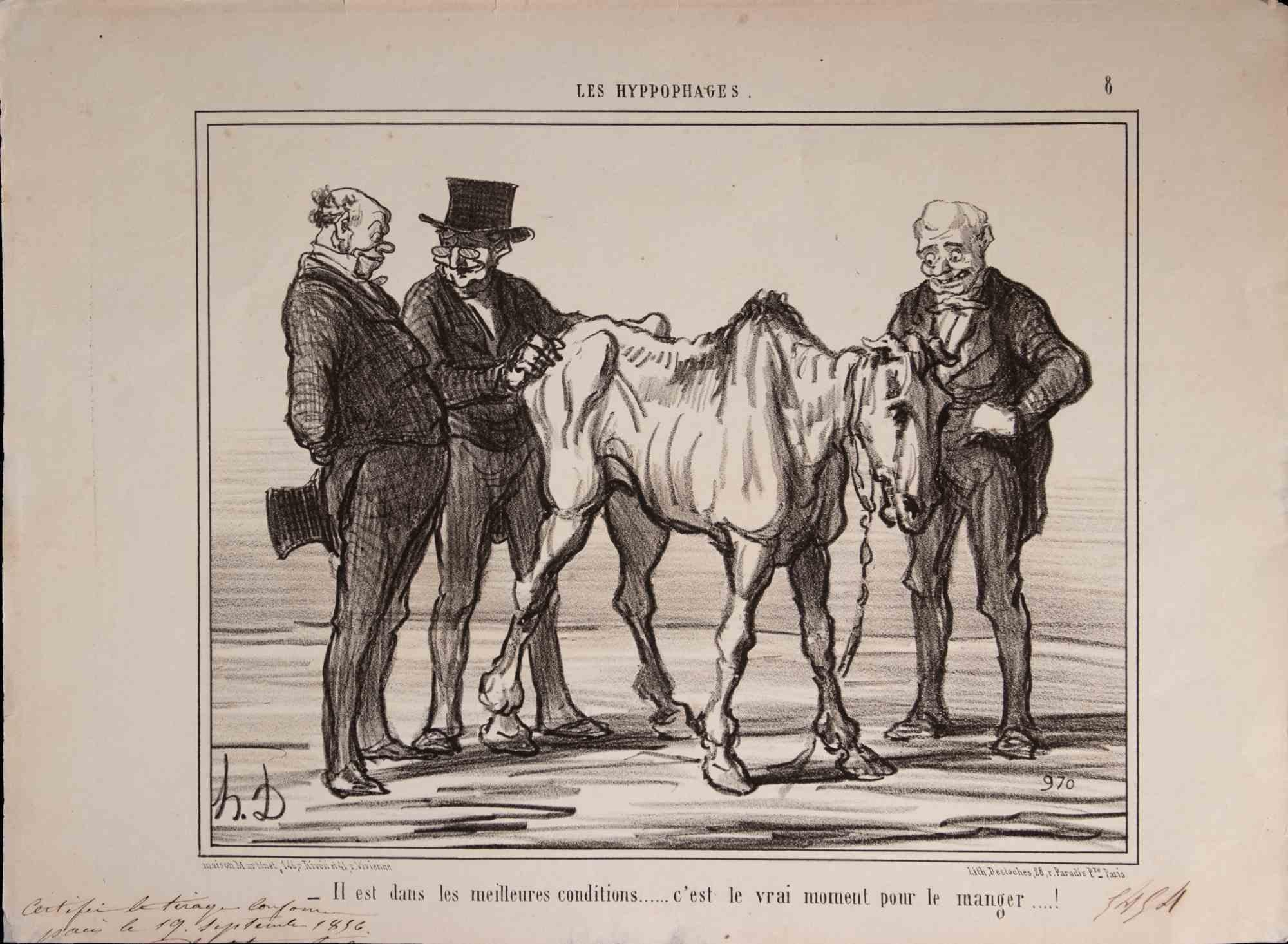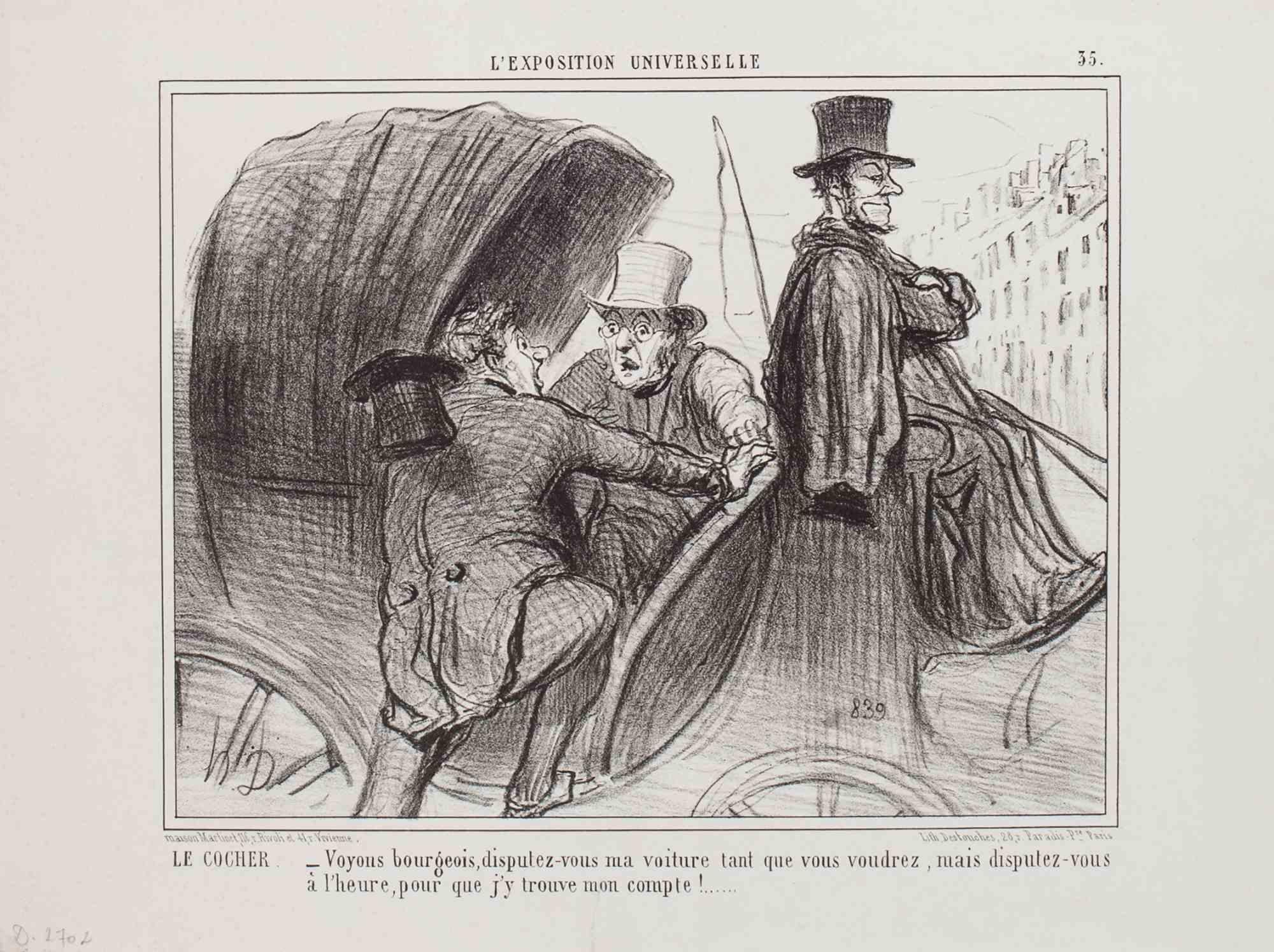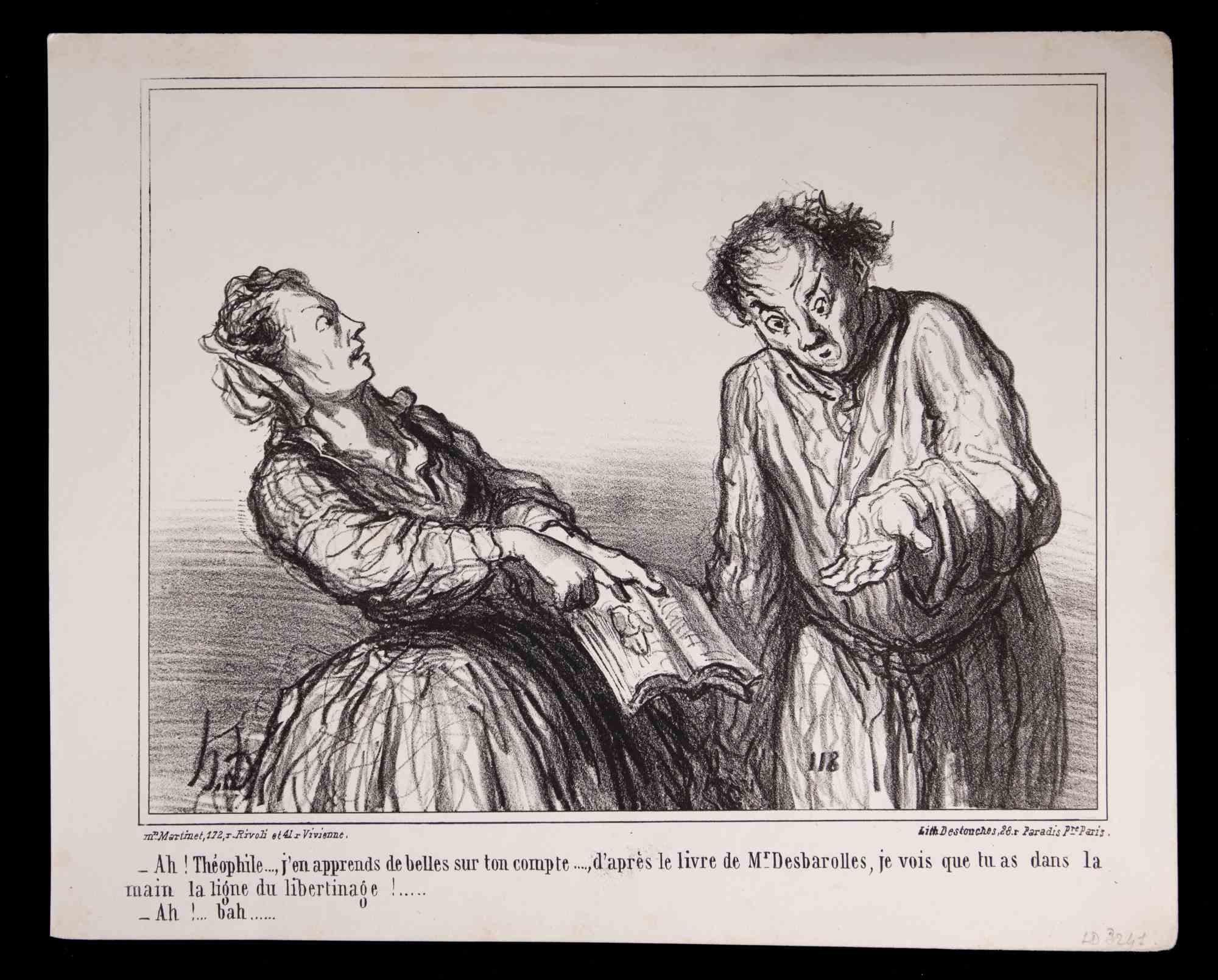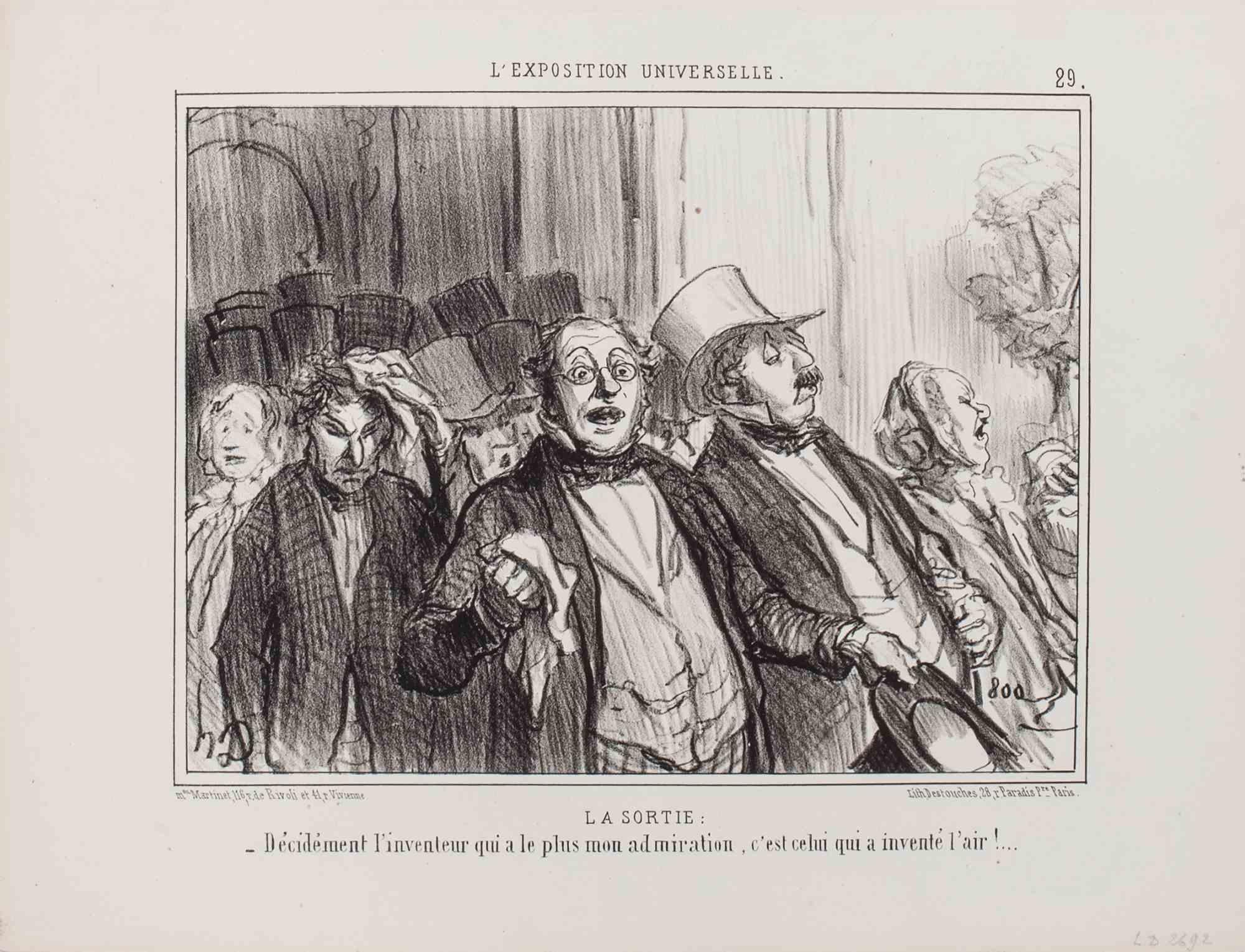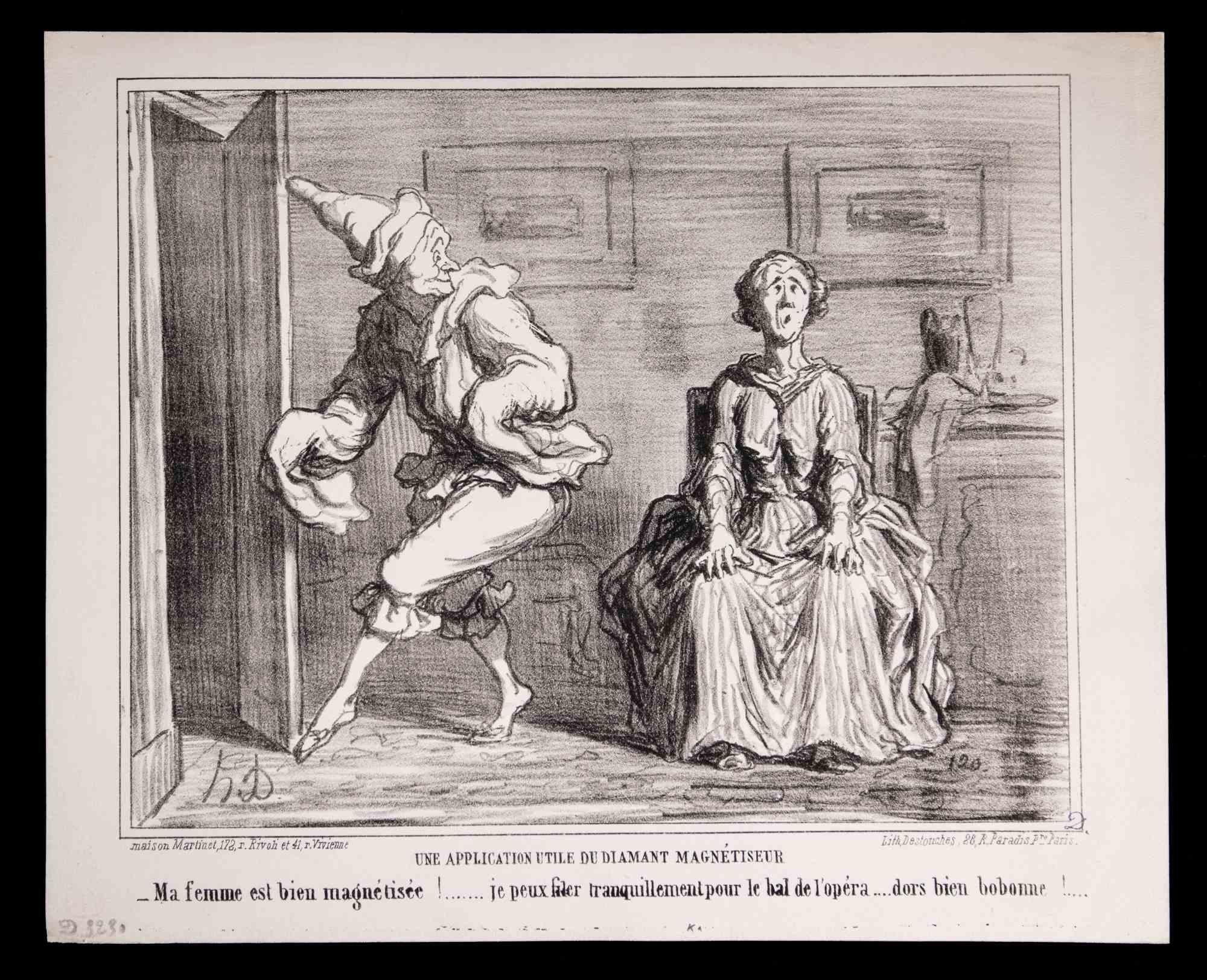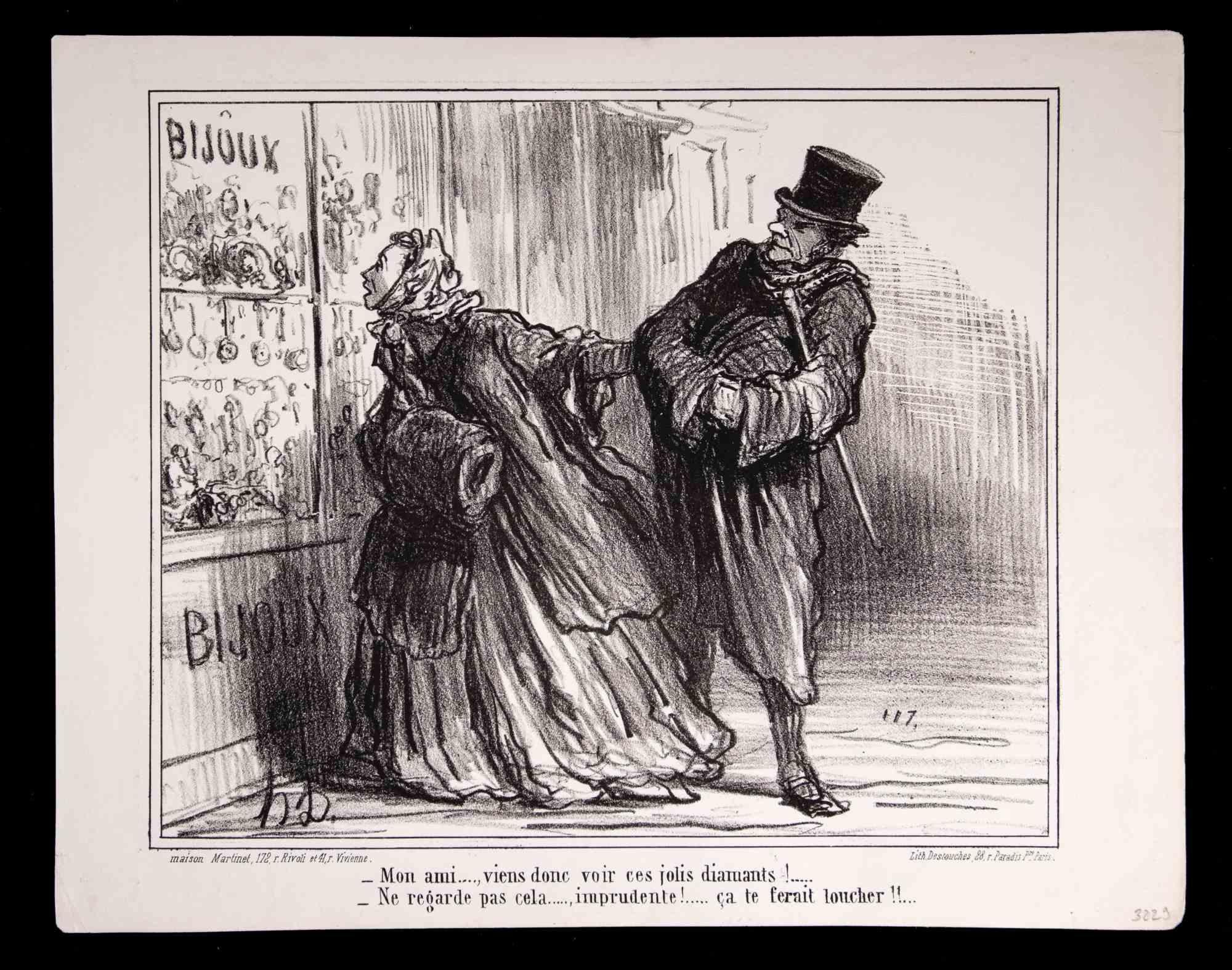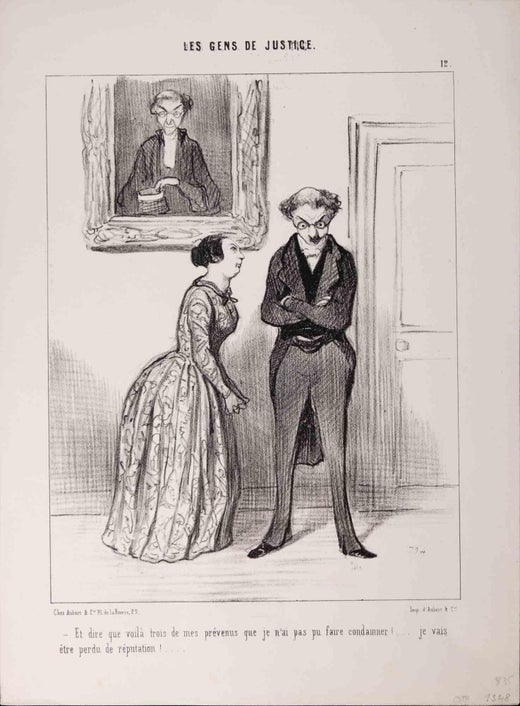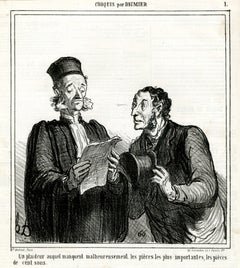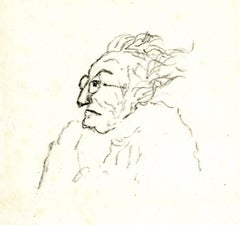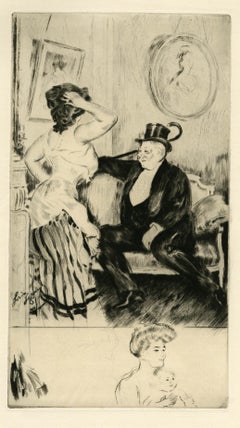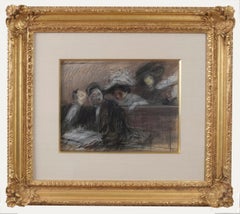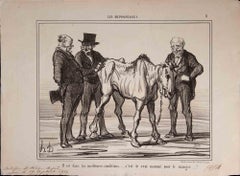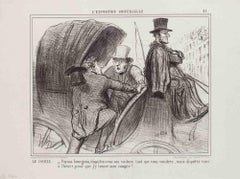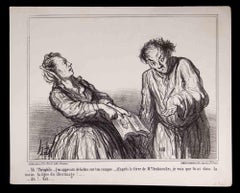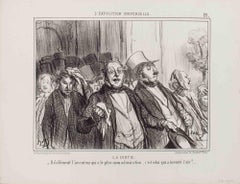Items Similar to L'ACTEUR . . . . - On voit bien qu'il fait chaud . . . . . . . trois spectateurs
Want more images or videos?
Request additional images or videos from the seller
1 of 8
Honoré DaumierL'ACTEUR . . . . - On voit bien qu'il fait chaud . . . . . . . trois spectateurs1856
1856
$1,100
£830.14
€950.38
CA$1,551.36
A$1,703.20
CHF 888.57
MX$20,611.15
NOK 11,136.79
SEK 10,493.79
DKK 7,094.37
About the Item
L'ACTEUR . . . . - On voit bien qu'il fait chaud . . . . . . . trois spectateurs dans la salle ..... faut-il commencer ? . . . .
LE DIRECTEUR .- Et encore un des trois est le vendeur D'ENTRACTES . . . . . faites lever le rideau tout de suite avant qu'il
Lithograph, 1856
Signed with the artist's initials in the stone lower left
(see photo)
Series: PARIS L'ÉTÉ, plate 1, PARIS L'ÉTÉ. (Summer in Paris) is a series consisting of 5 prints which appeared in May 1852, in August 1854 and in June 1856 in the Charivari.
Published in: Le Charivari, 16.06.1856
Publisher: Destouches, Paris
Signed and inscribed by the publisher/printer Destouches in the lower right corner. (see photo)
Note: A rare "sur blanc" impression printed on thin vellum mince paper (not the usual wove paper), with inscription in ink for the justification of printing (BAT) signed by the printer Destouches lower right corner.
Condition: Very good for a Romantic lithograph
Image size: 7 7/8 x 10 1/4"
Sheet size: 11 x 14 1/2 inches
Reference: Delteil 2826 ii/III, with letters
Delteil documents this state as VERY RARE
Provenance: Henri M. Petiet, Paris, Lugt 5031 on the reverse
- Creator:Honoré Daumier (1808 - 1879, French)
- Creation Year:1856
- Dimensions:Height: 7.88 in (20.02 cm)Width: 10.25 in (26.04 cm)
- Medium:
- Movement & Style:
- Period:
- Condition:
- Gallery Location:Fairlawn, OH
- Reference Number:Seller: FA90221stDibs: LU14014167862
Honoré Daumier
Honoré-Victorin Daumier was a French printmaker, caricaturist, painter and sculptor, whose many works offer commentary on the social and political life of 19th-century France. Daumier is famous for this satirical commentary through the lithographs he produced. He is best known for his caricatures of political figures. Daumier’s works are found in many of the world’s leading art museums, including the Louvre, the Metropolitan Museum of Art and the Rijksmuseum.
About the Seller
5.0
Recognized Seller
These prestigious sellers are industry leaders and represent the highest echelon for item quality and design.
Platinum Seller
Premium sellers with a 4.7+ rating and 24-hour response times
Established in 1978
1stDibs seller since 2013
813 sales on 1stDibs
Typical response time: <1 hour
Associations
International Fine Print Dealers Association
- ShippingRetrieving quote...Shipping from: Akron, OH
- Return Policy
Authenticity Guarantee
In the unlikely event there’s an issue with an item’s authenticity, contact us within 1 year for a full refund. DetailsMoney-Back Guarantee
If your item is not as described, is damaged in transit, or does not arrive, contact us within 7 days for a full refund. Details24-Hour Cancellation
You have a 24-hour grace period in which to reconsider your purchase, with no questions asked.Vetted Professional Sellers
Our world-class sellers must adhere to strict standards for service and quality, maintaining the integrity of our listings.Price-Match Guarantee
If you find that a seller listed the same item for a lower price elsewhere, we’ll match it.Trusted Global Delivery
Our best-in-class carrier network provides specialized shipping options worldwide, including custom delivery.More From This Seller
View AllUn plaideur auquel manquent malheureusement
By Honoré Daumier
Located in Fairlawn, OH
Un plaideur auquel manquent malheureusement les pieces les plus importantes, les pieces de cent sous.
(A litigant who unfortunately doesn't have the most important details to success..dollars and cents)
Series: Croquis par Daumier, No. 1
As published in Le Charivari, Paris, October 20, 1865.
Croquis (Sketches by Daumier) is a series of 4 prints...
Category
1860s Romantic Prints and Multiples
Materials
Lithograph
Untitled (Study of a Lawyer)
By Honoré Daumier
Located in Fairlawn, OH
Unsigned
Provenance:
FAR Gallery, New York, NY
Private Collection, New Jersey
Reference and Notes:
Daumier was a prolific draftsman. This drawing of a lawyer was once part of a...
Category
Mid-19th Century Impressionist Portrait Drawings and Watercolors
Materials
Charcoal
En passant (Passing by)
By Louis Legrand
Located in Fairlawn, OH
En passant (Passing by)
Drypoint, 1909
Unsigned (as issued in the deluxe portfolio)
From the album "Les Bars" (8 plates plus cover illustration)
Edition: 30, this state with remarque
Published by Gustav Pellet, Paris
A very rich impression wwith burr
Condition: Excellent
Image/Plate size: 9 7/8 x 6 3/8 inches
Reference: Arwas 391a (remarque)
Exteens 277 i/II
IFF 148 (portfolio)
Louis Auguste Mathieu Legrand (29 September 1863 – 1951) was a French artist, known especially for his aquatint engravings, which were sometimes erotic. He was awarded the Légion d'honneur for his work in 1906.
Life
Legrand was born in the city of Dijon in the east of France. He worked as a bank clerk before deciding to study art part-time at Dijon's Ecole des Beaux-Arts. He won the Devosge prize at the school in 1883.[2] In 1884 Legrand studied engraving under the Belgian printmaker Félicien Rops.
Legrand's artworks include etchings, graphic art and paintings. His paintings featured Parisian social life. Many were of prostitutes, dancers and bar scenes, which featured a sense of eroticism. According to the Hope Gallery, "Louis Legrand is simply one of France's finest early twentieth century masters of etching." His black and white etchings especially provide a sense of decadence; they have been compared to those of Henri de Toulouse-Lautrec, though his drawings of the Moulin Rouge, the can-can dance and the young women of Montmartre preceded Toulouse-Lautrec's paintings of similar scenes. He made over three hundred prints of the night life of Paris. They demonstrate "his remarkable powers of observation and are executed with great skill, delicacy, and an ironic sense of humor that pervades them all."
Two of his satirical artworks caused him to be tried for obscenity. The first, "Prostitution" was a symbolic drawing which depicted a naked girl being grasped by a dark monster which had the face of an old woman and claws on its hands; the second, "Naturalism", showed the French novelist Émile Zola minutely studying the thighs of a woman with a magnifying glass. Defended by his friend the lawyer Eugène Rodrigues-Henriques (1853–1928), he was found not guilty in the lower court, but was convicted in the appeal court and then given a short prison sentence for refusing to pay his fine.
Legrand was made famous by his colour illustrations for Gil Blas magazine's coverage of the can-can, with text by Rodrigues (who wrote under the pseudonym Erastene Ramiro). It was a tremendous success, with the exceptional quantity of 60,000 copies of the magazine being printed and instantly sold out in 1891.
In 1892, at the instigation of the publishing house Dentu, Legrand made a set of etchings of his Gil Blas illustrations. The etchings were published in a book, Le Cours de Danse Fin de Siecle (The End of the Century Dance Classes).
Legrand took a holiday in Brittany, which inspired him to engrave a set of fourteen lithographs of simple country life called Au Cap de la Chevre (On Goat Promontory). It was published by Gustave Pellet who became a close friend of Legrand's. Pellet eventually published a total of 300 etchings by Legrand, who was his first artist; he also published Toulouse-Lautrec and Félicien Rops among others.
He did not only work in graphics; he exhibited paintings at the Paris salon of the Société Nationale des Beaux-Arts starting in 1902. In 1906 he was made a chevalier of the Légion d'honneur.
Legrand died in obscurity in 1951. A retrospective exhibition was held at the Félicien Rops museum in Namur, Belgium in 2006 to celebrate his graphic art. The art collector Victor Arwas published a catalogue raisonné for the occasion.
Books illustrated
de Maupassant, Guy: Cinq Contes Parisiens, 1905.
Poe, Edgar Alan: Quinze Histoires d'Edgar Poe...
Category
Early 1900s Art Nouveau Interior Prints
Materials
Drypoint
Le Resesquement a l'Advocats (The Legal Reservation)
By Jean Louis Forain
Located in Fairlawn, OH
Le Resesquement a l'Advocats
(The Legal Reservation)
Pastel on paper, c. 1910
signed lower right
Image size: 10 3/4 x 14 inches
Frame size: 23-1/2 x 26-1/2 x 2-3/8 inches
Condition: ...
Category
Early 1900s Impressionist Figurative Paintings
Materials
Pastel
Untitled (Standing man with umbrella behind)
By Charles Maurin
Located in Fairlawn, OH
Untitled (Standing man with umbrella behind)
Graphite on paper, c. 1890's
Unsigned
Provenance: Estate of the Artist
Lucien Goldschmidt (1912-1992), noted art
...
Category
1890s French School Figurative Drawings and Watercolors
Materials
Graphite
Le Rêve (The Dream)
By Théophile Alexandre Steinlen
Located in Fairlawn, OH
Le Rêve (The Dream)
Color gillotage poster, 1890
Signed in the image lower right corner (see photo)
This poster for a ballet at the Académie nationale de musique in Paris is typical ...
Category
1890s Impressionist Figurative Prints
Materials
Lithograph
You May Also Like
Il Est dans les Meilleures Conditions... - Lithograph by Honoré Daumier - 1857
By Honoré Daumier
Located in Roma, IT
Il Est dans les Meilleures Conditions ... is a b/w litograph plate (n. 8), from the satirical series Les Hippophages, composed of 10 plates of caricatures “ de mœurs” (of behaviours)...
Category
1850s Modern Figurative Prints
Materials
Lithograph
Le Cocher - Lithograph by Honoré Daumier - 1855
By Honoré Daumier
Located in Roma, IT
Beautiful lithograph with margins, realized by Daumier in 1855.
It belongs to the Series "L'Exposition Universelle".
Ref. Delteil 2702
Category
1850s Modern Figurative Prints
Materials
Lithograph
Ces Bons Parisiens - Lithograph by Honoré Daumier - 1859
By Honoré Daumier
Located in Roma, IT
Lithograph realized by Daumier in 1859.
Belongs to the Series "Ces Bons Parisien".
Ref. Delteil 3241
Very good condition
Category
1850s Modern Figurative Prints
Materials
Lithograph
La Sortie - Lithograph by Honoré Daumier - 1853
By Honoré Daumier
Located in Roma, IT
Beautiful lithograph with margins, realized by Daumier in 1855.
It belongs to the Series "L'Exposition Universelle".
Ref. Delteil 2692.
Category
1850s Modern Figurative Prints
Materials
Lithograph
Ces Bons Parisiens - Lithograph by Honoré Daumier - 1859
By Honoré Daumier
Located in Roma, IT
Lithograph realized by Daumier in 1859.
Belongs to the Series "Ces Bons Parisien".
Ref. Delteil 3241
Very good condition
Category
1850s Modern Figurative Prints
Materials
Lithograph
Ces Bons Parisiens - Lithograph by Honoré Daumier - 1859
By Honoré Daumier
Located in Roma, IT
Lithograph realized by Daumier in 1859.
Belongs to the Series "Ces Bons Parisien".
Ref. Delteil 3241
Very good condition
Category
1850s Modern Figurative Prints
Materials
Lithograph
More Ways To Browse
Henry Moore Sculptural Ideas
Hermes Paris Rue Du Faubourg Saint Honore
Hockney Glasses
Hockney Olympic
Homage To Chagall
Howard Smith
Jane Bazinet
Jim Dine Pace Gallery 1980
Kaws Pink Bff
Kaws Signed Print
Kayla Mahaffey
Keith Haring 1991
Keith Haring Dog
Keith Haring Paradise Garage
Kenneth Washburn
Ladislav Sutnar
Leroy Neiman Olympic Art
Leroy Neiman Original Art
